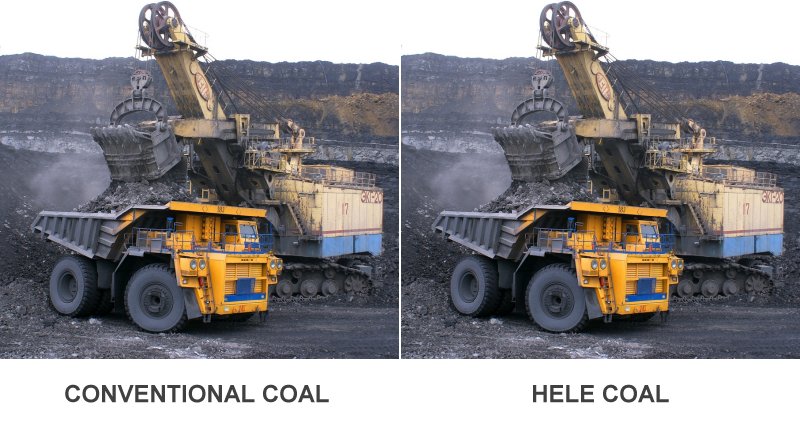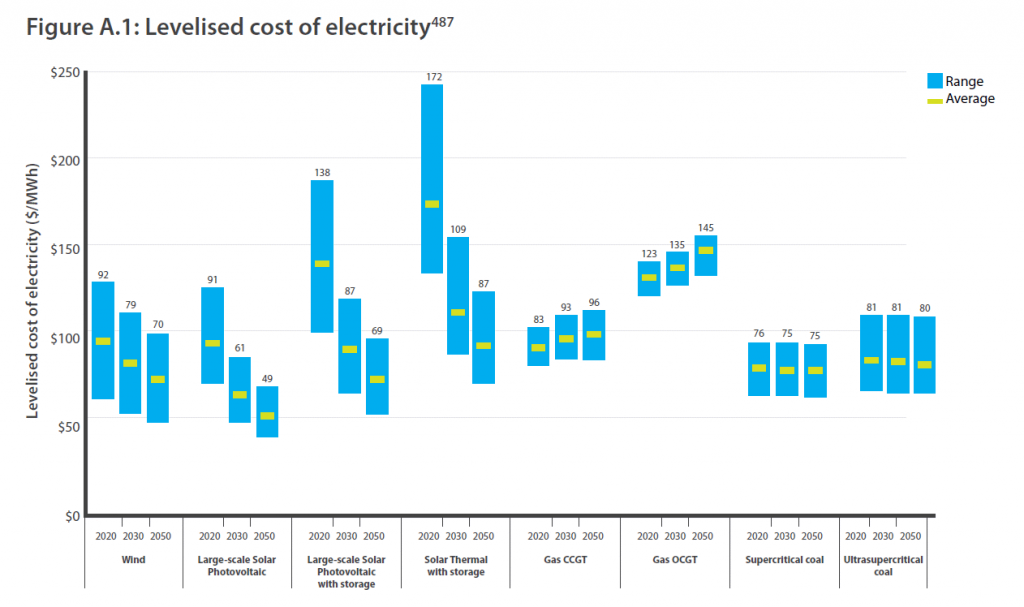
Image: stafichukanatoly
A new report ranking power prices in the National Electricity Market makes some curious claims about so-called high-efficiency, low emissions (HELE) coal fired power generation.
The report from the Australian Power Project ranked states in the National Electricity Market (NEM) for the fourth quarter of last year and found South Australians paid the highest prices for electricity.
Queensland led the NEM states with one of the lowest average bills and better value for money. The report (Word) states South Australia and Tasmania, which utilise a greater proportion of gas and renewables, have the highest annual electricity bills.
Without delving too much into the report’s conclusions on electricity prices, an important thing to note here with regard to South Australia is that it has always had high electricity prices – even before the first wind turbine was built or the first solar panel installed. As SQ’s Ronald puts it:
“South Australia doesn’t have high electricity prices because it has renewable energy. South Australia has renewable energy because it has high electricity prices.”
HELE Coal Good For What Ails Us? Nah.
The report then moves into some strange territory. It states:
“The government’s Finkel Review found new High Efficiency Low Emissions (HELE) coal fired power stations are cheaper to run than wind, solar with storage, and gas. This off-the-shelf solution would deliver the downwards pressure on power prices that Australian households and businesses need.”
Huh?
The Finkel Review report (PDF) was released back in June 2017.
The following is a graph from the report showing the Levelized Cost of Energy (LCOE) of various technologies (click for a larger view). LCOE is the total cost of ownership over an electricity generator’s lifetime divided by energy production.
Looking not too far into the future, that graph shows large-scale solar will be cheaper than HELE technologies – and bear in mind the Finkel Review report started being compiled quite a while before it was published. The renewables sector is evolving rapidly and solar power has continually bettered expectations on cost reductions over the years – and we can probably expect the same for large-scale storage.
For example, a Lazard report published late last year found in the USA, the low-end levelised cost of electricity from unsubsidised utility scale solar was already USD $36/MWh – so around AUD $50.
The Finkel Review makes a few other specific mentions of HELE coal, including:
“To compete with new gas-fired generation from the emissions point of view, new HELE generation would need to be fitted with carbon capture and storage”.
… and that’s very expensive. The LCOE costs in the chart above are without capture and storage (CCS).
The problem is that HELE coal without CCS isn’t all that low in emissions. The Finkel Review report notes the following estimated operating emissions (kg CO2-e/ MWh):
- Subcritical (conventional) brown coal – 1,140
- Supercritical brown coal (HELE) – 960
- Subcritical (conventional) black coal – 940
- Supercritical black coal (HELE) -860
- Ultra-supercritical brown coal (HELE) – 845
- Ultra-supercritical black coal (HELE) – 700
While perfect may be the enemy of good, coal power generation isn’t the answer in an increasingly carbon-constrained world – HELE or otherwise. HELE coal also still involves all the same damage associated with pulling the stuff out of the ground and doesn’t address other toxic emissions from burning the little black (or brown) rock.
Who Is The Australian Power Project?
The Australian Power Project is headed by Nathan Vass, who was the former Head of Corporate Communications/Investor Relations Officer at AGL Energy. Mr. Vass appears to be an advocate for “clean coal” and has been challenged before on claims relating to HELE coal fired power generation and CCS.


 RSS - Posts
RSS - Posts



“South Australia is that it has always had high electricity prices”
I still cannot find any actual evidence to support this claim.
I am not saying it is not true.
HELE coal sounds good but the plants need to capture the carbon dioxide produced and this is very expensive.
There was a pilot plant in Central Queensland where a 30 MW unit was fitted with carbon capture system. This was effective in capturing the carbon dioxide but it was just vented to the atmosphere so the storing part was not done. The system consumed 14 MW of power so for 30 MW of generation nearly half went into capturing the carbon dioxide..
I would expect the energy use would be less on up scaling but it would still be considerable.
Hi Michael,
I note that the “new report”, dated Jan 15, from the Australian Power Project (APP) is referring to findings (e.g. Figure A.1: Levelised cost of electricity) in the Finkel Review, published in June 2017 – more than a year and a half ago. In the Finkel Review on page 99, in Box 3.3 – Falling costs of technology, it includes:
“The Panel notes that, even since the Review started, utility scale batteries, wind and solar photovoltaic have declined in cost substantially more than expected.”
Since the Finkel Review was published, Lazard has published two Levelized Cost of Energy Analysis reports, in Nov 2017, and Nov 2018 (you referred to the latest one in your post).
See also: https://reneweconomy.com.au/lazard-hails-inflection-point-as-wind-solar-costs-beat-new-and-old-fossils-72497/
Bloomberg New Energy Finance has also published a recent LCOE analysis.
See: https://reneweconomy.com.au/unsubsidised-wind-and-solar-now-cheapest-form-of-bulk-energy-96453/
In the week before Christmas 2018, the CSIRO and AEMO released their inaugural joint study “GenCost 2018” that shows the cost of new wind and solar – even with hours of storage – is “unequivocally” lower than the cost of new coal generation.
See: https://reneweconomy.com.au/csiro-aemo-study-says-wind-solar-and-storage-clearly-cheaper-than-coal-45724/
I wonder why the APP is relying on apparently dated data (i.e. Finkel Review) when more recent data provides an entirely different conclusion to the one APP is asserting. Is APP ‘cherry picking’ convenient data while ignoring inconvenient data to promote a particular narrative? I think so.
No coal or gas plant will be viable as long as the LRET is in place. Prices are high because the market operator must call on peaking plants usually open cycle gas turbine (OCGT) to stop the grid from collapsing.
These OCGT plants bid very high to make them viable eg $14/mwh so everyone generating power gets paid that hence why Vic and SA have high power prices.
PS after 21 years of living in SA we never had high power prices until we blew up playford and went all i on wind and solar
You were lucky. In those 21 years everyone else in the state was paying the highest electricity prices in Australia.